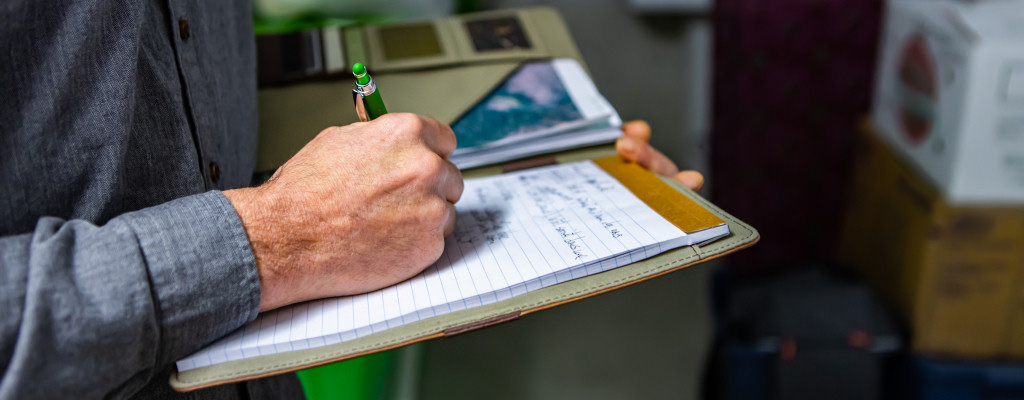To borrow a catchphrase from a beloved TV series… winter is coming. It may only be mid-August now, but some area schools are already back in session, the Pro Football Hall of Fame game was played a week ago, and we’ve had our first day with a high in the low 70s here in Northeast Ohio. Cold weather will be upon us before we know it – is your heating system ready?
That said, before you turn your furnace on for the season, there are things you ought to do first. Your heating system could have developed some problems while not being used through the summer and may need to be inspected or adjusted.
10 steps to a better heating experience this winter
Here’s a 10-step checklist from the neighborly team at Hey Neighbor Heating & Cooling to complete before turning the heat on this fall. Some checks you can do yourself, but it’s always wise to have our trained and certified technicians carry out a pre-run furnace inspection to ensure that your furnace will run like it should and heat your home well throughout the winter months.
Step 1: Check that your furnace has power. If you have a central air conditioning system, you probably already know the answer because your AC wouldn’t be working without power. Even so, give your fuse or breaker box a once-over and look for any other blown fuses or tripped breakers, as this could signal a problem with your home’s electrical system. If you’re unsure about something, call in a licensed electrician to inspect it to ensure that your family and home stay safe.
Step 2: Make sure that the unit’s power switch is on. Over the years, we’ve made many service calls where a furnace was mistakenly turned off. We’re always happy to help, but you’d probably like to avoid that bill if possible, right? Look for the power switch near your unit, which may be inside a metal enclosure. It should be pretty easy to spot, regardless. If it’s off, switch it on, and you should be all set!
Step 3: Look for obstructions in your system’s intake and exhaust outside. It’s best to check this while your furnace is in operation. Look for debris such as leaves, bugs, and even nesting mice that may be blocking the system’s airways. Be careful, though! A blockage can prevent proper airflow and cause excessive heat and carbon monoxide gas to build up. If you spot a clog, remove it only after turning your system off.
Step 4: Check your thermostat settings. First, set your thermostat to Heat and adjust the temperature so the furnace will turn on. You may notice a slight burning smell at first, but this is normal. It’s due to settled dust burning off the heat exchanger. Once you’re satisfied things appear to be working normally, change the temperature back to its usual setting.
Step 5: Replace your thermostat batteries. Even though your thermostat will warn you when its batteries are getting low, it’s smart to change them out each fall. If your system has a programmable thermostat, it probably uses two AAs or a 9-volt. It can be tricky locating the batteries on some thermostats, so if you’re having any problems replacing them, call our friendly Customer Service team for assistance.
Step 6: Inspect your air filter. Check your system’s air filter to ensure it isn’t dirty or clogged. We recommend replacing it at least every three months and more often if you have pets. Changing your filter regularly will lengthen the life of your system and ensure that it runs at optimal efficiency all year long.
Step 7: Have your home’s ductwork professionally cleaned. When was the last time your home’s ducts were vacuumed out? Decades ago? Possibly never? If you can’t remember when, it’s well past time for a cleaning. Along with a new filter, clean air ducts ensure that the air quality in your home is ideal and also enhance the efficiency of your entire HVAC system.
Step 8: Test your safety detectors. Before you use your furnace, ensure that your smoke and carbon monoxide (CO) detectors are working correctly. Press the Test button, and try not to jump when the unit squeals loudly! This just means it’s working as it should. Like your thermostat, if you haven’t changed your detectors’ batteries this year, it’s wise to replace them now. This simple task gives you peace of mind, knowing your detectors will alert you during an emergency.
Step 9: Confirm your furnace’s gas supply. This task is just about as easy as Step 2’s switch-flip. Locate the valve on the incoming gas line. If it’s a handle, turn it to align with the gas pipe. For faucet-style valves, twist it counter-clockwise until it stops. Warning: natural gas can be fatal, so if you notice a problem or smell a gas leak, we strongly urge you to call 911 immediately.
Step 10: Schedule your annual furnace tune-up. Not only will this low-cost maintenance by a professional technician keep your heater running at peak efficiency – saving you money each month – it’ll also extend the life of your system. By being proactive, you’ll also reduce the risks of costly breakdowns and repairs.
Pamper your furnace with Hey Neighbor Heating & Cooling
When it’s time to turn on the heat, ensure your furnace runs efficiently all season long with a preventative maintenance visit from our expert team. Stay cozy and warm when the temperature drops. Call Hey Neighbor Heating & Cooling to schedule furnace maintenance today and beat the seasonal rush – 844-HEY-NEIGHBOR!


Comments are closed